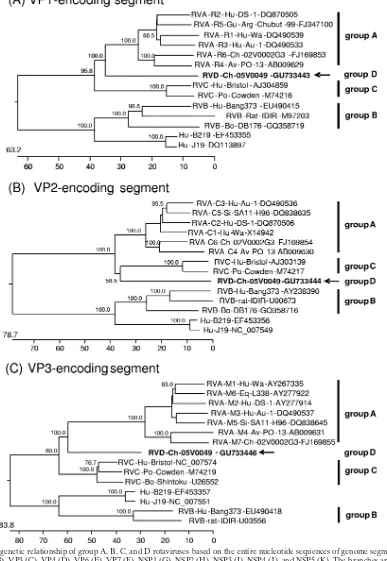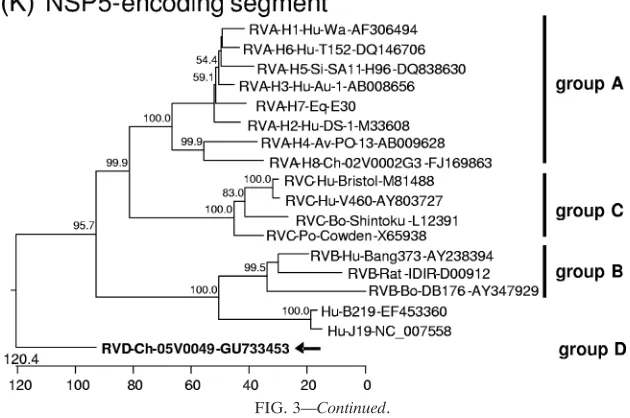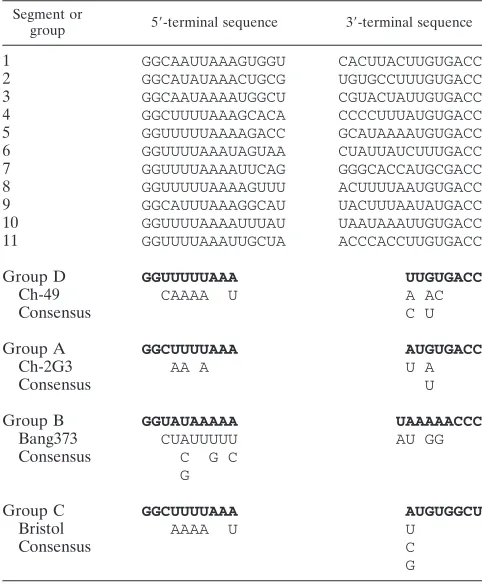The Genome Segments of a Group D Rotavirus Possess Group A-Like Conserved Termini but Encode Group-Specific Proteins
Full text
Figure
![FIG. 1. Identification of a group D rotavirus (strain 05V0049 [Ch-49]) in the intestinal content of a chicken](https://thumb-us.123doks.com/thumbv2/123dok_us/157282.34426/3.585.44.541.553.726/fig-identication-group-rotavirus-strain-intestinal-content-chicken.webp)



Related documents
The actors in this case study are Oxfam, Oxfam’s partner organizations, the governments of Kenya and Tanzania, and the communities in these two nations that are the
TPU Educational Standards-2010 develop and supplement FSES requirements with those of international certifying and registering organizations (EMF, APEC Engineer
Reception: Includes a five hour reception, round guest tables, gold chavari chairs, gift, guest book and cake table, white tablecloths and white napkins, glassware, silverware,
However, even if inflation truly was ’always and everywhere a monetary phe- nomenon’ in the long run, as stated by Friedman in his seminal 1963 book, a conventional vector
Therefore, adopting Cumulative Prospect Theory to study an economic agent’s decision making seems to be consistent with adopting new performance measures. The fundamental idea is
NOTE: The striated muscles belong to the group of organs that respond to the related conflict with functional loss (see also Biological Special Programs of the islet cells of
[r]
However, by identifying the inspectors as street-level bureaucrats (Lipsky, 2010), we take a bottom-up perspective on policy. The four mechanisms described here involve



